
Though often overlooked in yoga circles, the latissimus dorsi is celebrated poolside and in gyms everywhere as the muscle that gives the back body its attractive v-taper. The fan-shaped latissimus muscles (the “lats”) are the broadest muscles in the body (assuming their connective tissue is included) and they are hands-down the most powerful muscles of the back. Capable of lifting the body off the ground (as in a chin-up), they are used extensively when swimming, rowing and throwing a baseball. As important as they are, overly developed, tight lats may pose an issue for your yoga practice as they can wreak havoc with your downward dog, handstand and urdhva danurasana.
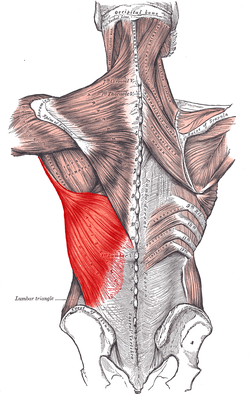
The lats span the distance from the lower back to the armpits. They cover the entire surface of the lower back, a large portion of the middle back and side body. You can easily feel their upper-middle portion at the outer edge of the armpit by sticking your thumb into the opposite armpit and squeezing the outer wall with the fingers. The lats originate on the posterior iliac crest; sacrum; thoraco-lumbar fascia; the spinous processes of sacral vertebrae 1-5, lumbar vertebrae 1-5, thoracic vertebrae 7-12; the lower three ribs; and the inferior angle of scapula. (experience.afrotech.com) They insert on the inside of the upper humerus (the floor of the bicipital groove to be exact) but not before they do a fancy 180-degree twist.
The lats are sometimes called handcuff muscles because they extend, adduct and internally rotate the shoulder—hence the 180 degree twist, which adds torque to this action. If you were “reaching for the sky,” the lats would draw the arms down and inwards towards the centerline of the body before spinning them towards each other to take the backs of the hands into the small of your back. When the humerus is fixed, as in upward dog, the lats blossom the chest forward through the arms. They also work with one of their synergists (pectoralis major) to move the body from downward dog to plank. Because they raise the lower ribs on the inhale, the lats are considered breathing muscles too.
Tight lats prevent both the necessary external rotation and shoulder flexion necessary for poses such as urdhva hastasana and warrior 1 and, as such, distortions in the spine become evident, along with a less than 180-degree armpit-chest angle. Bear weight on the arms in poses such as downward dog, headstand, pincha mayurasana, and urdhva danurasana and the issue becomes more pronounced with splaying elbows (read: internally rotating shoulders). Poses requiring extreme shoulder flexion and external rotation, such as ekapada rajakapotasana will be all but inaccessible to those with tight lats. Raising the arms with tight lats can result in rotator cuff impingement.
Discover our shoulder exercises and shoulder pain solutions.
Watch our free 5 minute shoulder pain relief video.
Read our post about “How to get Olympic Inspired Shoulders.”



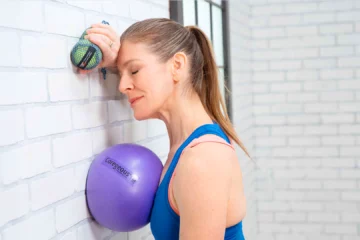
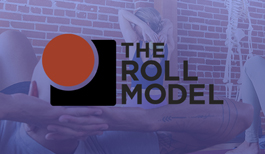



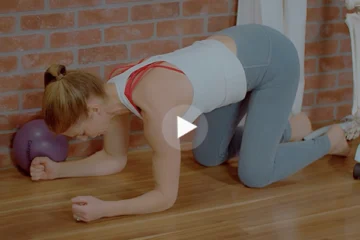
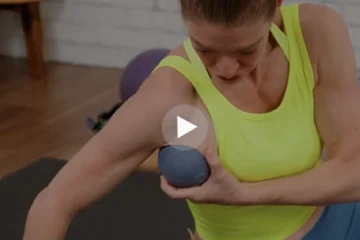


Thank you for this article. I haven’t read one about the lats yet. I’m excited to hear of ways to stretch them! Can they be rolled?
I often roll out my lats from humerus all the way to iliac crest – really helps to decrease that internal rotation of the shoulders that causes me a lot of grief. I love teaching this to very muscular clients to help them improve their shoulder mobility as well.
Lats are often a culprit when it comes to restricted shoulder flexion and we often compensate through back extension. Lengthening the lats can prevent loading the spine in a closed position/extension and therefore prevent hypermobility.
Never considered the lats in terms of issues of the shoulder, the ” hand cuff’s” analogy was perfect in understanding the role they play in the rotation of the shoulder, looking forward to sharing this new knowledge with students. .
This blog caught my attention I believe because it so speaks to me and so many of the students that I teach. As you mentioned tight shoulders are often mentioned in Yoga classes but not tight latissimus dorsi. And for so many of my students that work as tradesmen, just raising their arms straight in the air can be a challenge because of rotator cuff problems and tight lats. Thank you for bringing attention to this.
Thanks for the great article! I do notice this common restriction in my students, especially in the poses you mentioned like warrior 1 or downdog. You’ve inspired me to find ways to highlight this powerhouse of a muscle in my classes. Thanks again!
Great article and analogy! I have very built lats, but lack in mobility in that area. I hang from the bar and I feel that helps stretch out the latissimus Dorsi. I am sure there are many ways to do so, though.
Thanks for a fun article, Yumee!
As someone who has suffered from rotator/shoulder impingement I never understood enough about the lats and the role they played in my injury. Thank you for such a concise and thorough review!
This makes me want to focus on my lats even more! I guess I never realized the lack of focus on this crucial area in my yoga practice. This will make me more aware on those days I work on my pull ups, how important it will be to roll out those areas with my YTU balls!
You had me at “the handcuff muscle” — what a fantastic analogy to remember the actions of the lats. Thank you for bringing into light what this muscle is responsible for during a down dog flow or sun salutation. Super important to note that hypertonicity of the lats can inhibit necessary external rotation of the GH joint in weight bearing poses (such as down dog) and will cause impingement of the rotator cuff. It’s not just about tight shoulders! Thanks for making this connection!
YuMee, thank you for writing such an informative blog about the ‘Lats’. As an occasional gym goer I noticed the Lat pull down machine has a dimensional image of the Lats so users can see what muscles they are targeting. It wasn’t until I started using the Roll model balls that I began to have an awareness of these muscles. Self-massage helped stimulate a blind spot in my body. After rolling I could feel these muscles activating and working in a three dimensional manner. The experience was a total turnaround for me as I carried this awareness into my yoga practice.
The description of “the hand cuff” muscles helped me to understand the action of these muscles and how they prevent the inaccessibilty of my downward dog….time to stretch!
Hi Yumee! So true! I always wanted to do these poses nut until I was able to reverse years of tightness could I start to hit handstand and pincha. I found self massage as well as help from amazing teachers (like yourself) has helped me find the lat openers I needed to properly align my body. Great article!!
I love those lats too but I as a climb also I too se the tendency of them t be overused and to often see on climbers who don’t do other sports or bodywork that slightly chimp like posture. Often I meet climber who deliberately engage in yoga to help balance out there shoulder spine musculature.
I am just learning about the muscular structure of our bodies and I literally just finished a class on Down Dog Done Right” therefore reading your blog on the importance of the latissimus dorsi was timely to say the least. One would think that a muscle that extends from the armpit to the lower back and that is also part of the respiratory system would be common knowledge. Latissiums dorsi…wow!
Thank you for this article. In YTU TT and recently through Anatomy the lats were a big puzzle piece of the back that I just was not grasping. This article explained the function and attachment of the lats in such a wonderful way. Thank you!
YuMee, I have this issue with overdeveloped pecs and lats and feel it in warrior one, downdog, handstands – you name it. It always translates into my rib cage/spine. Practicing YTU poses like Holy Cow at the Trough and Squat Arms at the wall have really helped. I have also include dolphin supinate.
Thanks for your great posts.
i see this in class -tight lats impeding external rotation and shoulder flexion making W1 arms challenging. i somtimes suggest cactus arms as a modification.
Thank you for the post on the lats. I have recently been struggling getting length in my back in my handstand and I think the culprit for my struggle are my lats. It’s easy to get caught up in the big picture of the handstand and trying to master the pose, causing me to forget to take the pose part by part, muscle by muscle. Maybe instead of continuing to kick up, balance and then try to stretch longer, I will begin spending time lengthening and stretching my lats.
Lose, strong, lats. Long, lean lats. We do not need Michael Phelps’s lats unless we are Michael Phelps:) But after reading this, I can’t believe how much we do need the lats for. Extension, adduction and internal rotation of the shoulders AND they lower the ribs for inhalation so they become a breathing muscle as well. It’s a wonder we don’t spend all day in gratitude for the muscles in this amazing body that we have. Instead we just go about our business and act like it should work all the time efficiently and beyond. Try that with your car. No gas. No oil. No steering. Just try it. In a wide open filed with lots of soft spaces to hit…
Great information. Lats are often neglected, but can contribute to so many dysfunctions in the body. Thanks for sharing.
Fascinating that a muscle considered necessary to a beautiful back would cause such issues with external rotation and flexion of the shoulder joints that we yogis consider our foundational poses (e.g., adho mukha svanasana) or even such simple overhead poses like urdhva hastasana. Maybe part of the issue is that the lats get too much love, to the exclusion of other muscles? Seeking balance between the larger muscles like lats and smaller ones may be the key to improving the health of our shoulders, it seems, especially when we add weight-bearing on the arms to the equation.
You are preaching to the choir, sister! For years I was told I needed to strengthen my back. Not knowing much better, I diligently did lat pulls and rows in the gym and never thought about reaching my arms above my head (unless I was at a concert)…until I started with yoga. I’m still working on lat flexibility, but it’s getting better.
Thank you for this detailed explanation of the lats, YuMee. I must confess I have not given them much thought. When I read your description of what can happen when they are too tight, pictures of some of my stronger male students drift into my mind. I always just thought their shoulders were tight, but the role the lats play in decreased range of movement in the shoulder had never occurred to me. A lot of these men complain of shoulder pain. No wonder! Now I am curious to explore more specific lat stretching poses, and I am also wondering what poses help to strengthen the lats for those who have the opposite problem, and how weak lats might show up in someone’s postures? Thank you Lisa for your good suggestions of Sidewinder for strengthening and Boomerang for stretching, up to now I was thinking mostly of obliques and Q L when I did those. I am looking forward to deepening my relationship with this big and beautiful latissimus dorsi, and learning to recognize what it is doing in my students as well.
[…] article originally appeared on the Yoga Tune-Up Blog. Share this:TwitterFacebookLike this:LikeBe the first to like this […]
I enjoyed this article. The handcuff analogy is helpful in remembering the role of this large muscle. I hadn’t really considered the lats with respect to impingement of external rotation in the shoulders. Thanks for this well-written and useful information.
Oh, so maybe this is what I have with my left side, so what kind of exercise do you suggest for me to do to allow my should to rotation with ease and to rectify my issue?…Would love your feedback!!
Lats are such an important muscle! It can affect the length in your torso which ultimately affects your posture and your overall health. My favorite exercise are the sidewinder and the boomerang to stretch it out.
I am in full agreement. I swim a lot and my lats are way too tight. I am restricted in certain poses and stretches because of my lats. I really need to work on them daily to obtain better results. Thanks for the additional information 🙂
There is no doubt tight lats can lead to a rotator cuff impingement – my Dr. just confirmed that is my problem! I appreciate the thorough explanation it has helped me understand how and why this happened.
Great information on the lats, I have seen a lot of these issues in my male students who have spent a lot of time in the gym!
This article makes complete sense now. Now I understand better why it is so difficult for some of the younger very muscular men to get into Urhdva Danurasana correctly in my class.
Talk about a hard working muscle! I agree with lois…I never seem to think of the lats as being a muscle of respiration. In fact, while they are such a focus in the gym scene I feel like hear less about them in yoga even though they are such a key muscle. In the poses where tight lats would hinder shoulder flexion, for example, I find it much more common to be in these poses concentrating on the 4 rotator cuff muscles and the sensation there, versus tracing it back to the possibility of tight lat. Great reminder to watch for in classes.
Yumee..thanks for the great heads up on the Lats and certainly the impact of working them out has had in my practice. I had no idea the major significance of their build up, factoring into my practice and ability to reach my edge. thanks!
Thanks Yumi. I’m currently fascinated with the diaphragm and the other muscles of respiration. Had no clue that the lats are also aiding the inhale. Woah.
Thanks for this quick but thorough explanation. Interesting that while I was swimming regularly, I was simultaneously getting rotator cuff pain. Guessing I was strengthening plenty, and not simultaneously stretching/increasing flexibility. It’s all in the balance…
I loved reading all about the lats.–the broadest muscles in the body I myself do not have tight lats. I can not do a chin-up. Many of my students also need to strengthen their lats